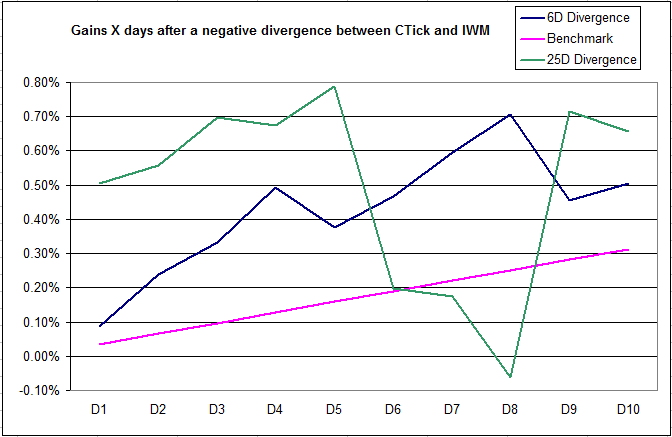Since I had some more time in the past days, I conducted some more research on the Cumulative Tick. We can indeed see below that the Cumulative Tick shows a strong negative divergence to IWM, whihc would tend us to think that IWM will weaken.
Below is the Cumulative Tick data from 2007. We can see that during the crash of 2008, the Cumulative Tick was not negative. However, as soon as QE started, the CTick detected the positive flow of money. This ended when tapering was first announced, but restarted when the BOJ announced its Nirp policy.
Since Trump won the elections, the Cumulative Tick has shown almost no accumulation, while the price gained much.
A shorter period points to negative CTick/Price divergences being displayed either on a 25 days or on a 6 days basis.
I conducted a back-test of what happens when such divergences are detected. The results below clearly show that since 2009, such divergences have not pointed to lower prices. To the contrary, prices in the following days have outperformed the benchmark.
This tells us NOT to short the market on the basis of the Cumulative Tick alone. It is best to look at the 20DMF confirmed by a weak the Cumulative Tick. This is how I use the Cumulative Tick in the 20DMF trading model: as a confirmation tool for short signals. The Cumulative Tick indeed is very good at detecting funny money coming from central banks. It is a poor idea to short the market when such money is moving in. This is not the case today as central banks do not seem to offer free money for investors to push asset prices higher.





 Reply With Quote
Reply With Quote

